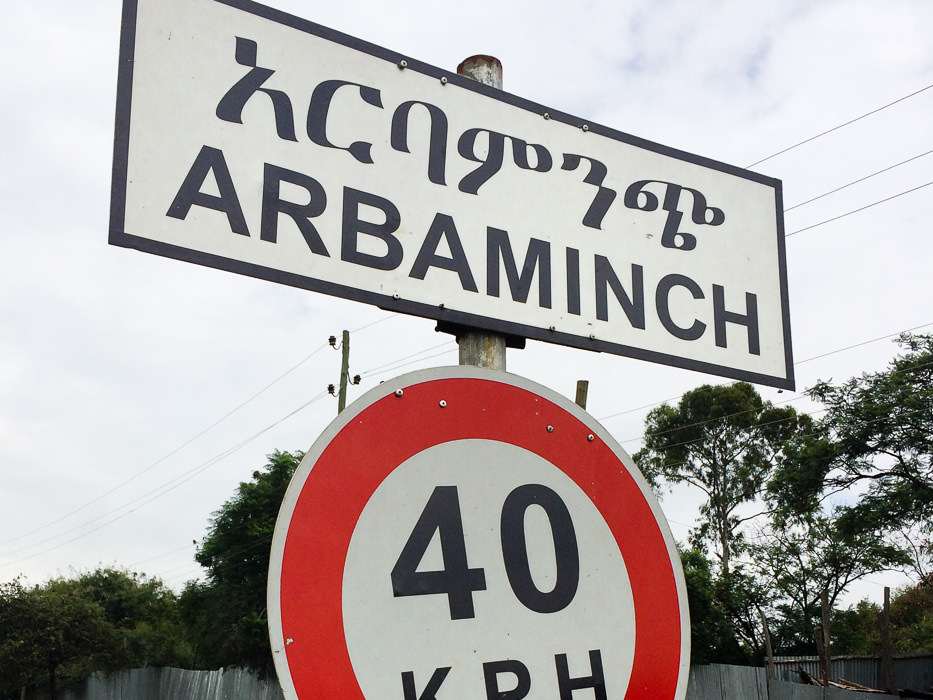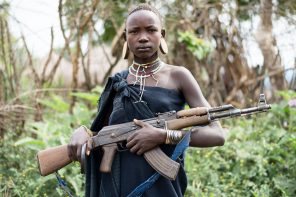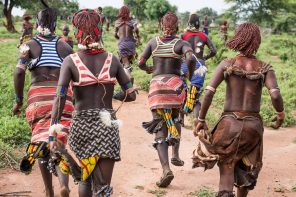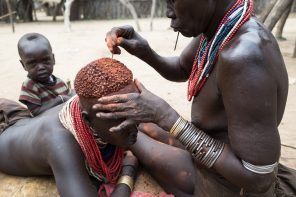I visited South Omo (also known as Omo Valley) in December of 2015 as part of a one-month trip throughout Ethiopia. South Omo is best known for its amazing density and diversity of living African tribes.
This is the first post of a travelogue series on southwest Ethiopia, covering around seven days of activity in its entirety. Before you read this, make sure to check out my how-to guide on preparing for a South Omo trip for an introduction to the region.
The places I visited in the course of said week include the following:
- Arba Minch
- Karat-Konso (Arba Minch and Karat-Konso are not technically part of South Omo, I know!)
- Dimeka
- Turmi
- Omorate
- Kolcho
- Alduba
- Jinka
- Mago National Park
- Key Afer
- Dorze (Dorze is not part of South Omo either, but it’s a common stop on many South Omo trips!).
A rough map of the places I visited in South Omo.
The tribes I’ll see and photograph in the course of my South Omo trip include:
- Konso
- Hamar
- Dassenech
- Karo
- Bena
- Aari
- Mursi
- Tsemai
- Dorze
Preparing for My Visit to South Omo
In this post, we’ll cover the beginning of my trip into South Omo, including the following:
- Scouting out tour services in Addis Ababa
- Traveling by air from Addis Ababa to Arba Minch
- Hiring a guide, driver and vehicle in Arba Minch
- Sleeping in Arba Minch
The first step of my trip through South Omo was just to arrange and book my trip through South Omo. Given the lack of public transport in the southwest corner of Ethiopia and my lack of time remaining in my Ethiopia trip, I needed to hire a vehicle (and thus a guide and driver) in order to see South Omo and ensure that I could get in and out within my timeframe.
I shopped around a lot before landing on my guide/tour service. Prior to leaving for Arba Minch, I prowled the streets of Addis Ababa for almost a full day, talking to every tour service I could find, in hopes I could find an existing tour I could join at a relatively economical cost. This simply did not exist at the time, or if it did, I didn’t find it – nobody I spoke with had a vehicle going out in the next few days. So I booked a direct Ethiopian Airlines flight to Arba Minch to try my luck there, at a cost of around $60 US.
I departed for Arba Minch on Saturday, December 12th, 2015.
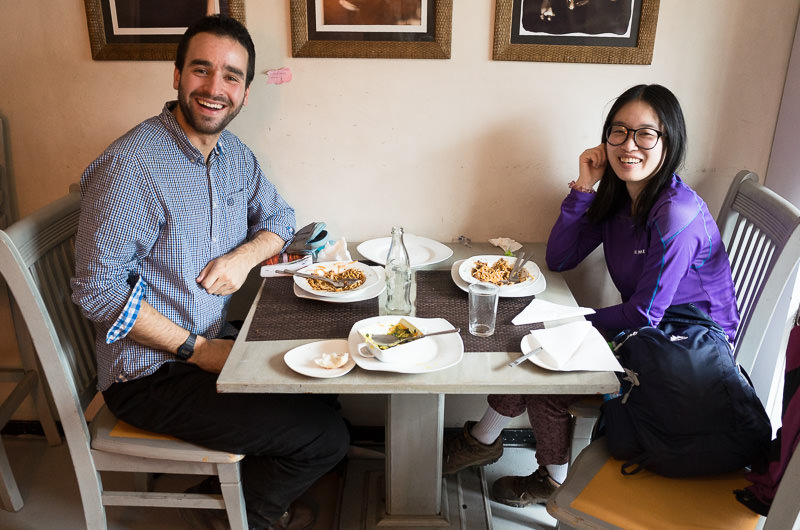
I became friends with Alex and Yan in Lalibela and spent time with them in Addis Ababa as well. I tried hard to get them to join me for South Omo, but they didn’t have the time. Would’ve been fun together!
But before I left Addis for Arba Minch, I phoned a local Arba Minch guide named Ephrem that had the time to take me out in a hired minibus if I chose to contract with him. I initially found Ephrem via TripAdvisor’s Ethiopia forums, where other travelers had written warm firsthand reviews on his service. We agreed to meet in Arba Minch to discuss specifics.
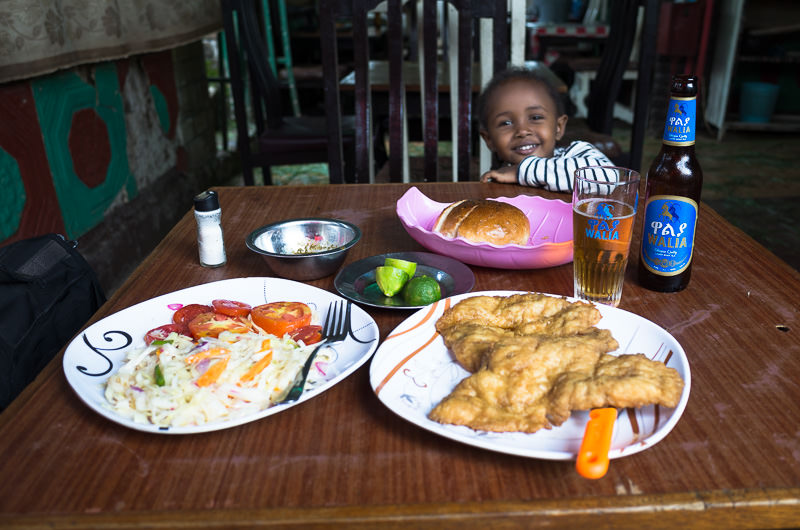
I ate a lunch of “asa kutilet” (fish cutlet) at Soma Restaurant an eatery in the Shecha area of Arba Minch. I washed my rather large helping of fish down with a Walia beer, which came to be my favorite of Ethiopia’s fairly tasty selection of brews. A little girl dropped by to say hello during my meal.
A Five Day Tour
After meeting, we agreed on an ideal tour schedule of five total days, departing the following morning from Arba Minch, and returning to Arba Minch to end the trip as well. We negotiated the total cost of this five-day tour through South Omo, including guide, driver and minibus/fuel and budget lodging arrangements to $150 US per day, or $750 US total (cash deal, no tax on top of the daily costs).
Not included in this price were the following:
- Tips for guides local to each tribe’s village (my guide hired locals along the way – I approve of this practice!)
- Food and drink
- End-of-trip tips for primary guide and driver
- Lodgings on final day of trip, upon return to Arba Minch
As discussed in a prior post about planning a trip to South Omo, per-person tour prices are almost always lower when split amongst a group. But I had no group – I was traveling solo and was faced with a hard choice: either eat the total cost myself or simply not book the tour at all. This was a larger outlay of cash than I wanted to make, but on the other hand, I really wanted to visit South Omo. For the rest of the day, I tried (somewhat desperately?) to form my own tour group from Arba Minch, in order to try to reduce my costs.
I know $750-1000 US is by no means a categorically unthinkable amount of money to spend on a tour, but if you’re traveling for months on end, activities like these become serious budget-breakers and have to be considered on a case-by-case basis.
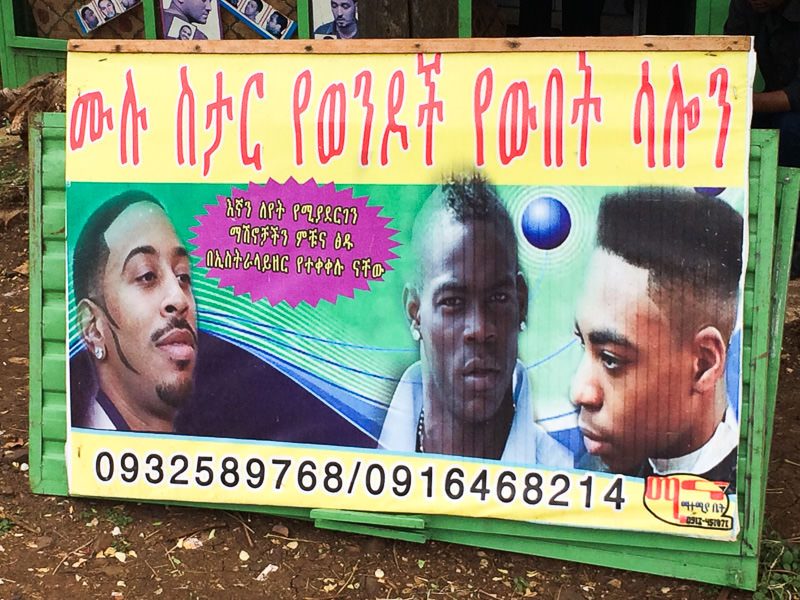
Atlanta rapper Ludacris is featured on nearly every barber shop sign in Ethiopia. This one was found in Arba Minch.
I started hunting potential tour-mates at my lodgings: Tourist Hotel, a place that proudly charges foreign nationals double the room price of Ethiopians (apparently a widespread and common practice in Arba Minch). Tourist Hotel has a large and rather popular courtyard area, where it’s sometimes possible to interact with other travelers. I approached multiple groups, but nobody could join me. Some had just come back from their South Omo trip, others were headed elsewhere. No luck.
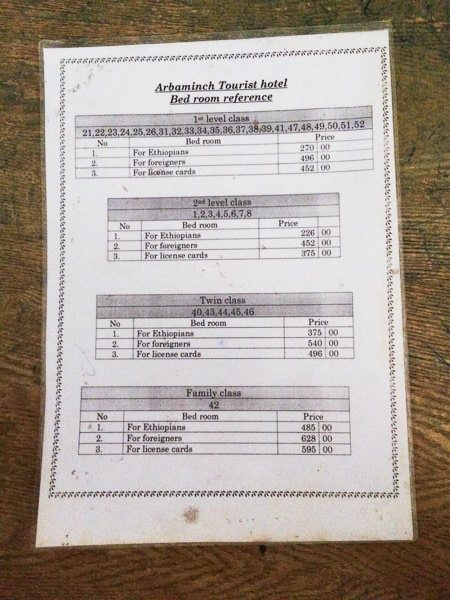
A laminated price list with 200% prices for foreign nationals at Tourist Hotel. What are your thoughts on such a pricing scheme?
My guide-to-be offered me another possible solution: head to the bus station to intercept incoming travelers/backpackers and pitch them on joining my South Omo trip. So off to the dusty Arba Minch bus station we went.
We spent hours there. My guide taught me how to spot incoming travelers: we sat at a small coffee vendor and watched buses incoming from major destinations like Addis Ababa. When they pulled in, we did our best to identify anyone who might be a traveler (admittedly foreign nationals with big packs, primarily) in order to address them right when they stepped off the bus. For the afternoon, I had become a tout, (gently) harassing backpackers as they disembarked in Arba Minch.
A handful of travelers came in by bus, but nobody wanted to join me for the coming days. My guide and I continued this hunt until a 5:00 PM cutoff time, at which point I still found myself as a party of one. Now it was up to me – if I wanted to tour South Omo with my guide, it would be a solo trip (plus guide and driver of course), and would be stuck paying all costs by myself. This kind of expense is normally a non-starter for me, but then again, I had no idea when I would be coming back to Ethiopia in the future, so I pulled the trigger on the trip and moved forward.
One bummer of this failed group-building mission is that I really didn’t get to do hardly anything in or around Arba Minch. Ah well. Next time?

I just couldn’t catch a budgetary break on big activities in the course of my 2015 east Africa trip – I got stuck paying for my safari game drives in Kenya’s Maasai Mara National Reserve as a solo traveler too. Curious about what a solo safari costs? Check out this post for my Maasai Mara safari budget.
My guide left to make last minute arrangements for what would be a five-day trip through the South Omo region. I left to hit every ATM in Arba Minch, multiple times – my guide needed to be paid in cash, and I needed a little pocket money to cover other incidentals during the trip. Fortunately, I had two ATM cards connected to different banks, so I was able to withdraw the funds just in time, without either ATM card getting shut down by its bank.

RELATED POST: Never Run Out of Cash While Traveling
My tour-for-one departed the following morning at 8:00 AM in a minibus – just me, my guide Ephrem, and our driver, Masai.
In the next post, we’ll go over my visit to the Konso tribe’s village (a UNESCO World Heritage site) and the amazing experience of witnessing and photographing a Hamar tribe bull jumping ceremony. Thanks for reading!

